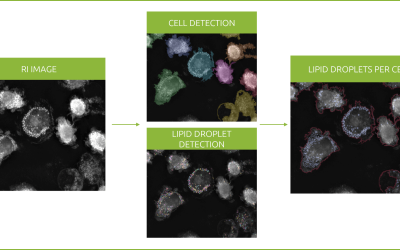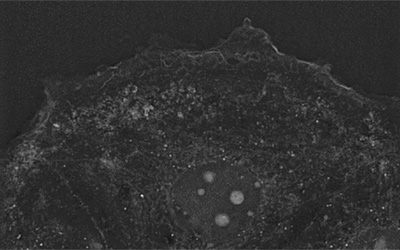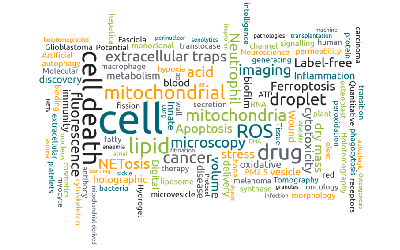Human Umbilical Vein Endothelial Cells (HUVECs) were first cultured in 1973[1]. Since then, their isolation protocols have improved and they have become a model system for the study of a variety of vascular pathologies, such as inflammatory disease, atherosclerosis and cancer.
Endothelial cells are found in the inner layer of both blood and lymphatic vessels and they play a role in substance transport and in a variety of other physiological processes[2].
Two samples of cryopreserved HUVEC culture from a single donor, and kindly provided by Promocell GmbH[3] were observed under Nanolive’s 3D Cell Explorer.
Mitosis
One of the samples led to the observation of a mitotic process (left on the footage). As described in our previous post featuring Mesenchymal Stem Cells, cell division is a strongly regulated process that ensures growth, wound healing and replacement of damaged cells in eukaryotic cells.
During the live cell imaging of the sample we could observe chromatin condensation, chromosome alineation in the metaphase plate, chromatids migration and the formation of the contractile ring and further separation in two fully functional daughter cells.
Mitosis Abortion
Mitotic exit is controlled by proteolysis[4], [5] and the activity of cyclin dependent kinases (CDKs) that play a key role in anaphase spindle formation and the onset of cytokinesis[4]–[7].
This mitosis regulation machinery can sometimes detect errors that may influence mitosis progression and exit, forcing a revert into interphase[4].
On the right side of the footage, the observed cell seems to enter mitosis, but the chromatids do not complete segregation and the cell goes back to interphase without dividing.
[1] E. A. Jaffe, R. L. Nachman, C. G. Becker, and C. R. Minick, “Culture of Human Endothelial Cells Derived from Umbilical Veins. IDENTIFICATION BY MORPHOLOGIC AND IMMUNOLOGIC CRITERIA,” J. Clin. Invest., vol. 52, no. 11, pp. 2745–2756, Nov. 1973.
[2] C. Michiels, “Endothelial cell functions,” J. Cell. Physiol., vol. 196, no. 3, pp. 430–443, Sep. 2003.
[3] “HUVEC: Human Umbilical Vein Endothelial Cells | PromoCell.” [Online]. Available: https://www.promocell.com/product/human-umbilical-vein-endothelial-cells-huvec/. [Accessed: 09-Aug-2019].
[4] F. Wolf, R. Sigl, and S. Geley, “‘… The end of the beginning’: cdk1 thresholds and exit from mitosis.,” Cell Cycle, vol. 6, no. 12, pp. 1408–11, Jun. 2007.
[5] T. A. Potapova et al., “The reversibility of mitotic exit in vertebrate cells,” Nature, vol. 440, no. 7086, pp. 954–958, Apr. 2006.
[6] L. Trinkle-Mulcahy and A. I. Lamond, “Mitotic phosphatases: no longer silent partners,” Curr. Opin. Cell Biol., vol. 18, no. 6, pp. 623–631, Dec. 2006.
[7] D. H. Parry, G. R. X. Hickson, and P. H. O’Farrell, “Cyclin B destruction triggers changes in kinetochore behavior essential for successful anaphase.,” Curr. Biol., vol. 13, no. 8, pp. 647–53, Apr. 2003.
Read our latest news
Revolutionizing lipid droplet analysis: insights from Nanolive’s Smart Lipid Droplet Assay Application Note
Introducing the Smart Lipid Droplet Assay: A breakthrough in label-free lipid droplet analysis Discover the power of Nanolive's Smart Lipid Droplet Assay (SLDA), the first smart digital assay to provide a push-button solution for analyzing lipid droplet dynamics,...
Food additives and gut health: new research from the University of Sydney
The team of Professor Wojciech Chrzanowski in the Sydney Pharmacy School at the University of Sydney have published their findings on the toxic effect of titanium nanoparticles found in food. The paper “Impact of nano-titanium dioxide extracted from food products on...
2023 scientific publications roundup
2023 has been a record year for clients using the Nanolive system in their scientific publications. The number of peer-reviewed publications has continued to increase, and there has been a real growth in groups publishing pre-prints to give a preview of their work....
Nanolive microscopes
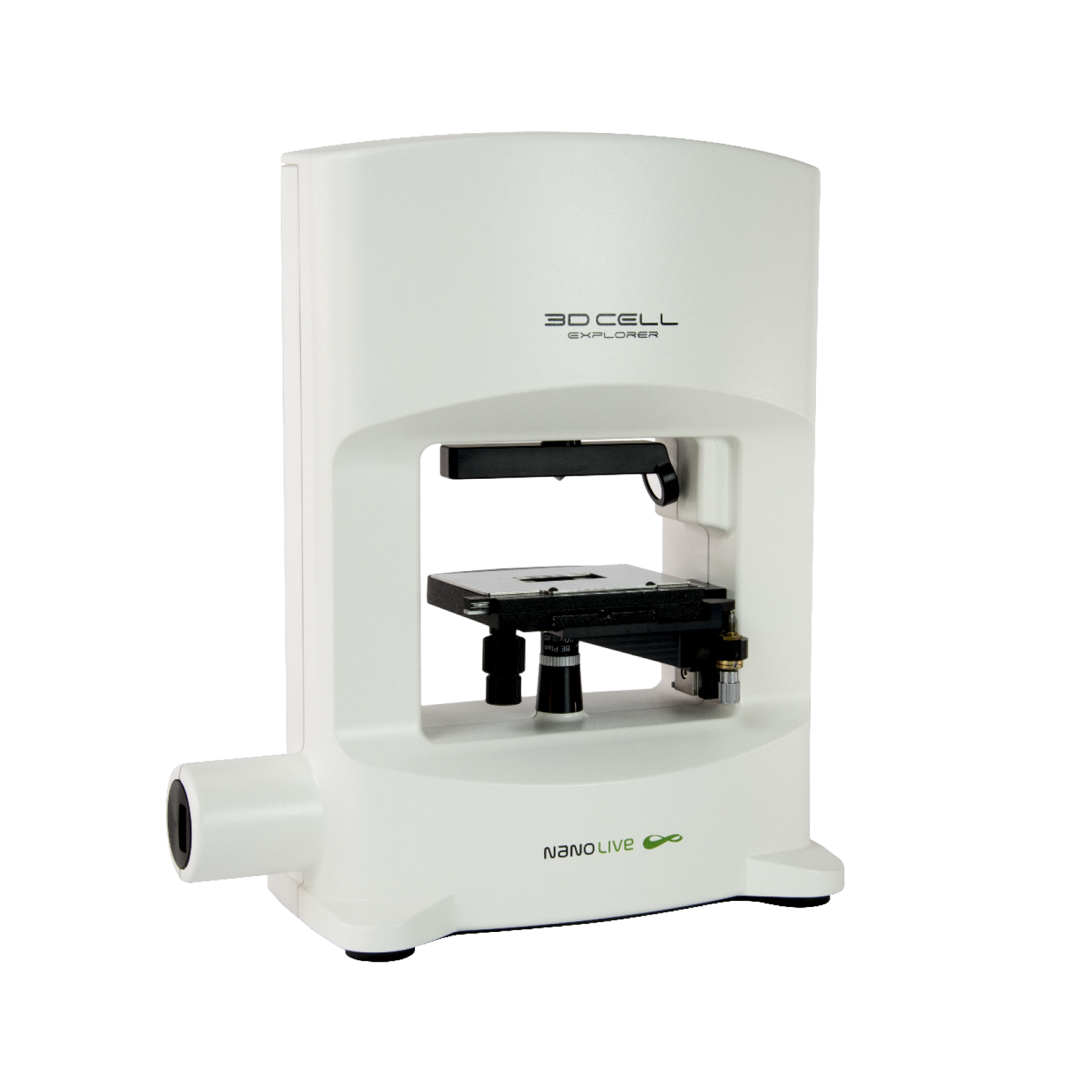
3D CELL EXPLORER
Budget-friendly, easy-to-use, compact solution for high quality non-invasive 4D live cell imaging
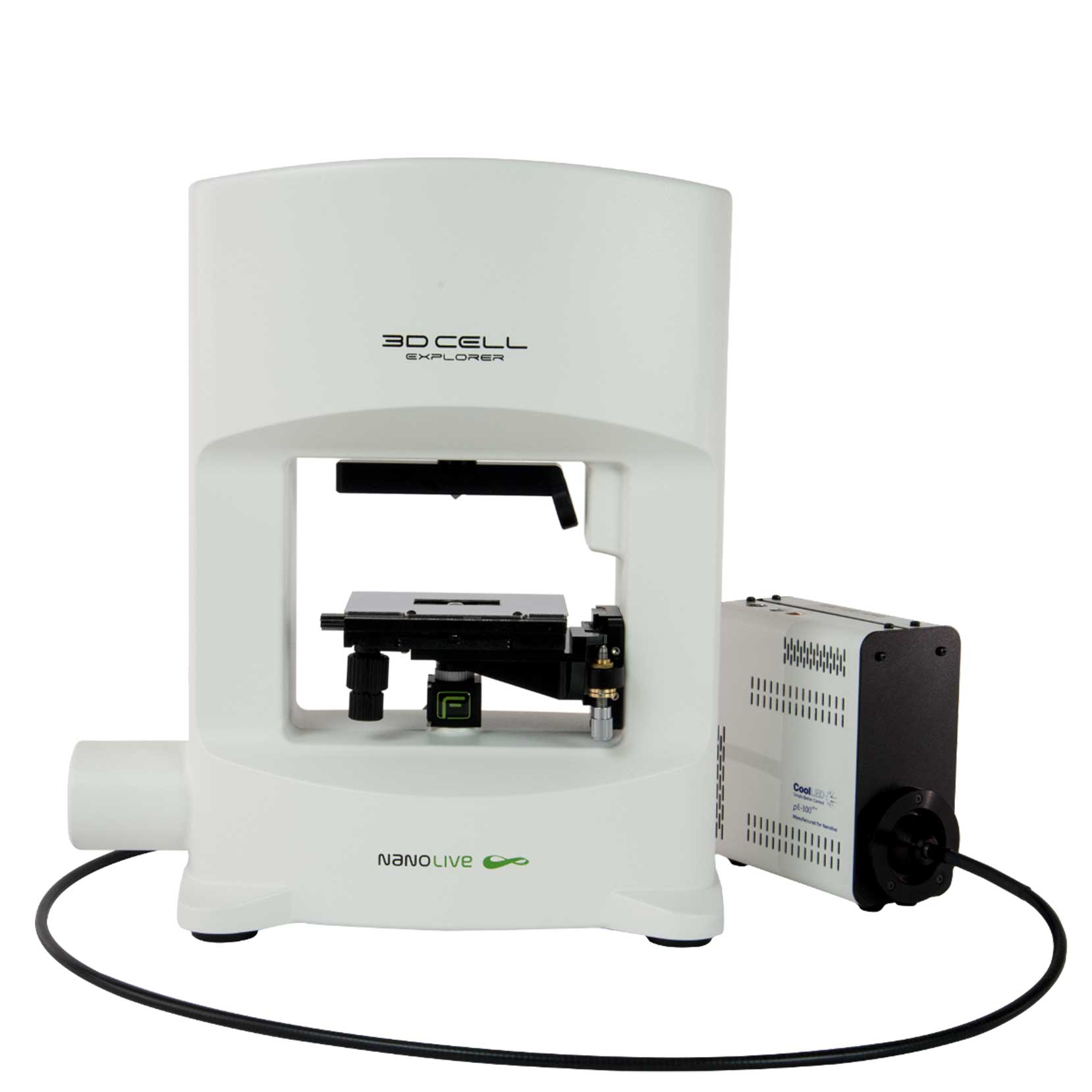
3D CELL EXPLORER-fluo
Multimodal Complete Solution: combine high quality non-invasive 4D live cell imaging with fluorescence

CX-A
Automated live cell imaging: a unique walk-away solution for long-term live cell imaging of single cells and cell populations

